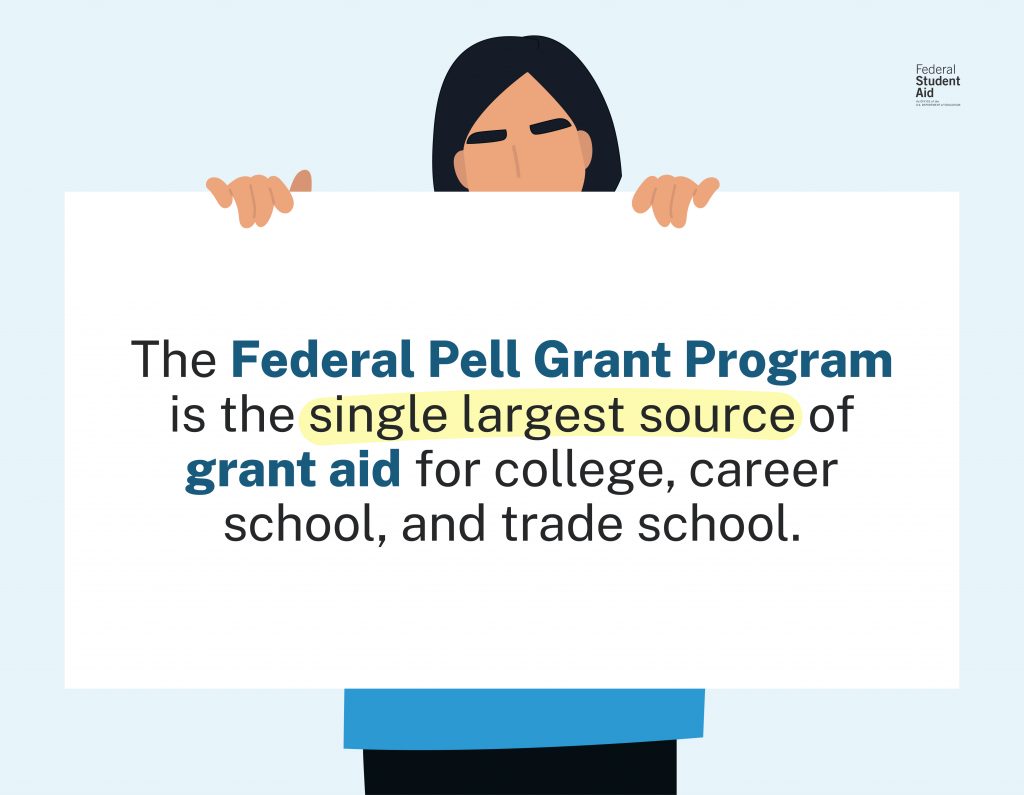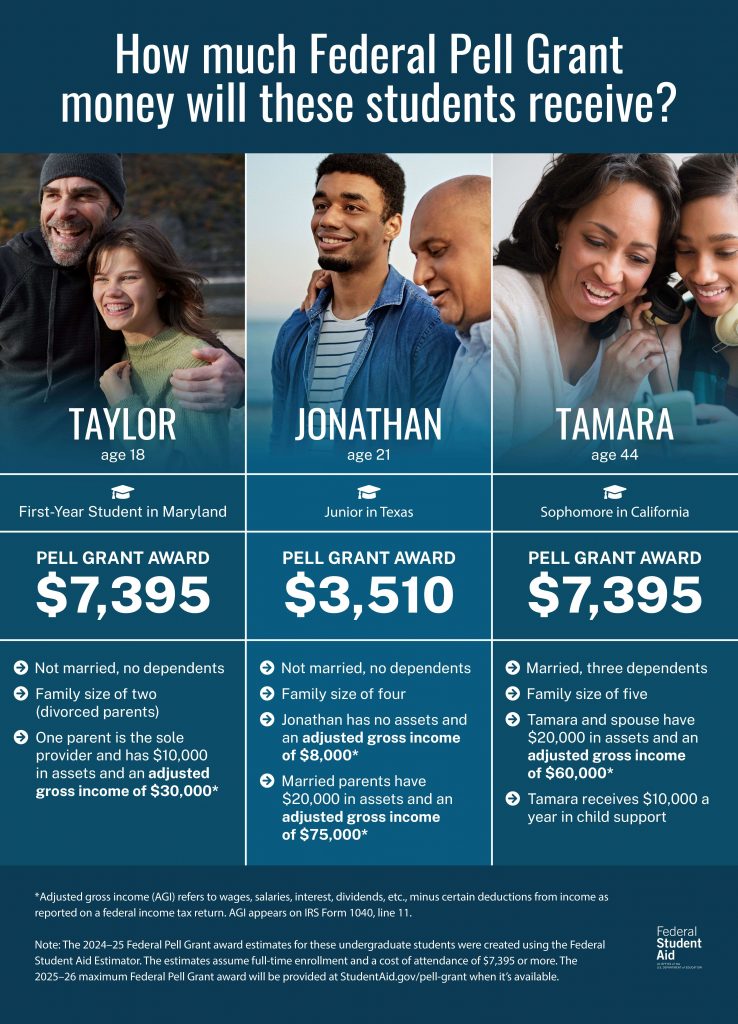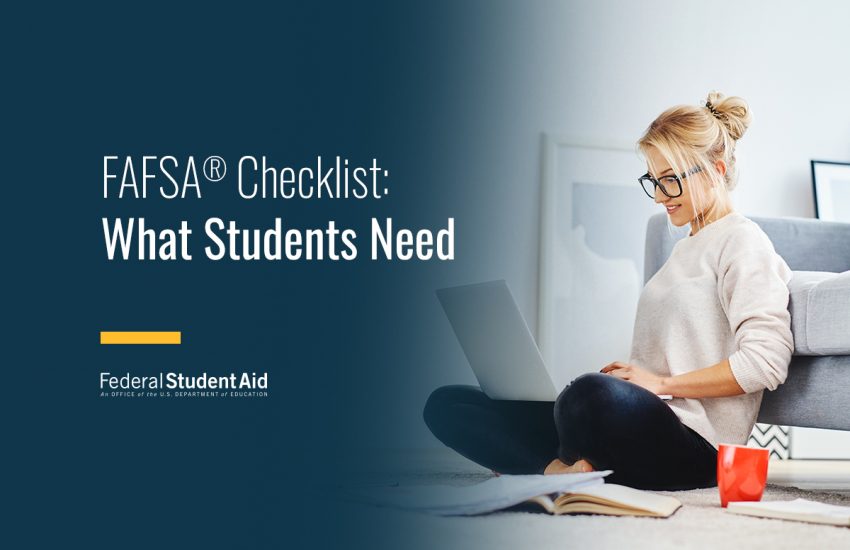Don’t Miss Out on Federal Pell Grants

Millions of undergraduate students receive Federal Pell Grants every year to help pay for college, career school, or trade school. But many people miss out because they don’t think they’re eligible or don’t know how to apply. Don’t let this be you! Read on to learn what you need to know.
What is a Federal Pell Grant?
A Federal Pell Grant is a type of grant that provides funds to help pay for school. Pell Grants are typically awarded to undergraduate students who display exceptional financial need. Unlike federal student loans, Pell Grants don’t have to be paid back except under certain circumstances.
Millions of Pell Grants are awarded each year to eligible undergraduate students who submit the Free Application for Federal Student Aid (FAFSA®) form.
Pell Grants have been around for more than 50 years—the program started in 1972 to address the growing need for financial assistance for undergraduate students. Since then, millions of Pell Grants have been awarded to eligible students who submitted the FAFSA form each year they attended school.

How much money could I get from a Federal Pell Grant?
Every year, the federal government updates the maximum Federal Pell Grant award amount. For the 2025–26 award year, the maximum Pell Grant award is $7,395. (Note: The maximum Pell Grant award amount for the 2026–27 award year will be announced in early 2026. Check for updates at StudentAid.gov/pell-grant.)
Some students may be able to receive up to 150% of their yearly Pell Grant award if they attend an additional school term within the same school year. This is often called “year-round Pell.” For example, if you were awarded a $3,000 Pell Grant, you’d likely receive $1,500 in both your fall and spring semesters. But you may qualify for another Pell Grant of up to $1,500 if you enroll at least half time during the summer semester.
Pell Grant funds can be used to pay for school-related expenses at eligible two-year community colleges, career schools, trade schools, online schools, and four-year colleges and universities.
You can receive Pell Grants for about six years total. The years you receive Pell Grants don’t need to be consecutive. For example, let’s say you attended college for two years and then left school. If you decided to return three years later to finish your undergraduate degree, you may still qualify for Pell Grants.
Who is eligible for Federal Pell Grants?
Any undergraduate student, regardless of age, who hasn’t earned a bachelor’s, graduate, or professional degree may be eligible for a Federal Pell Grant if they have financial need and meet a few basic requirements. Note: If you’re confined or incarcerated in a federal or state facility, you may be eligible for a Federal Pell Grant if you’re enrolled in an approved prison education program.
Don’t let the term “financial need” make you assume that you won’t qualify for a Pell Grant. Your eligibility for a Pell Grant is based on more than just your (or your family’s) income. The federal government will also consider your family size, tax filing status, and the federal poverty guidelines to determine your eligibility for a Pell Grant.
If you already completed the FAFSA form, you’ll be able to find your estimated Pell Grant award on your FAFSA Submission Summary. If you haven’t submitted your FAFSA form yet, you can see how much in Pell Grant funds you may qualify for by using the Federal Student Aid Estimator. Keep in mind that even though the Federal Student Aid Estimator has a “Submit” button, it’s just a tool that provides an estimate of how much federal student aid you may be eligible to receive. You won’t receive any federal student aid if you don’t complete a FAFSA form.
Can you show me an example of students who are eligible for Federal Pell Grants?
Take a look at the image below to see how much Federal Pell Grant money each of these undergraduate students may receive. All three students are attending a school with a cost of attendance that’s $7,395 or more, but each student’s particular situation—such as family size and family income—is different. Note: The Pell Grant award amounts below are estimates based on calculations by the Federal Student Aid Estimator. If you’re eligible for a Pell Grant, your school will determine your award amount based on your FAFSA information.

I’m still not sure if I’m eligible for a Federal Pell Grant. What should I do?
Even if you’re not sure if you’re eligible for a Federal Pell Grant, don’t make any guesses. Find out for yourself by filling out the FAFSA form.
When you submit all the required information on your FAFSA form, the U.S. Department of Education and the schools you listed on the form will calculate your financial need for you. If you’re accepted to the schools, you’ll receive student aid offer letters that list the types and amounts of student aid that are available for you, including a Pell Grant if you’re eligible.
You have nothing to lose by submitting your FAFSA form, but not doing it could mean you’re passing up an opportunity to receive funding that you don’t have to pay back—up to $7,395, the maximum Pell Grant award for the 2025–26 award year. Missing out on thousands of dollars in Pell Grant funds may negatively impact your ability to afford and attend school, which could limit your future career options.
If you choose to attend a community college and receive a Pell Grant, you may find that it covers a large portion of your costs. Another option is to search for schools that help pay for education costs for Pell Grant recipients. Some schools, including four-year colleges and universities, will even cover any remaining yearly tuition and fees.
Not sure if you’re eligible for a Federal Pell Grant? Don’t guess—find out by completing the FAFSA® form.
Filling out the FAFSA form isn’t as hard as you may think. Set yourself up for success by following these tips to complete your FAFSA form.
Remember: The FAFSA form is always free. If you need help, reach out to your current or prospective school’s financial aid office or visit our “FAFSA® Help” page.
Learn more about Pell Grants—including how Pell Grants get disbursed (paid out) and what to do to maintain a Pell Grant—by visiting our page on Federal Pell Grants.


